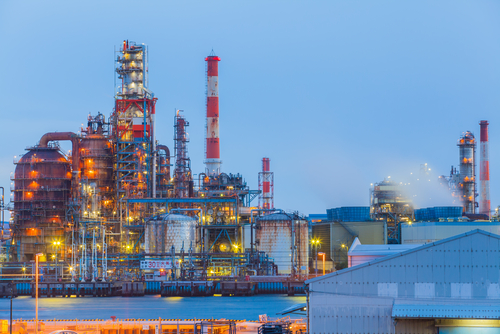After oil and gas drilling, along with oil and gas well completion, companies need to refine the crude oil to make it into the products used in everyday life. There are several methods oil and gas companies use to create these products, allowing for the creation of thousands of different variations of crude oil, including gasoline, jet fuel, diesel, petroleum and more. Cracking is one of those methods used to break up the hydrocarbons to create different products, but there are several tactics that may be used.
Thermal Cracking
After well drilling, some crude oil may be sent for thermal cracking. This method of breaking up the hydrocarbons within the crude oil requires the application of high heat, high pressure or a combination of the two to break up the molecules into smaller pieces. In general, there are two types of thermal cracking that may be used. Steam is one of the most commonly chosen methods because it is safe and environmentally friendly. To apply this tactic, steam at a high temperature, around 1500 degrees Fahrenheit, breaks up the butane, ethane and naptha into benzene and ethylene. These crude oil byproducts are used in chemical production.
Visbreaking is another thermal cracking technique that may be used. For this tactic, residual crude oil from the distillation tower is heated to 900 degrees Fahrenheit. It is then cooled and flash burned while still in the distillation tower. This can reduce the viscosity of heavier oils and will create tar. In contrast, sometimes this residue is heated beyond 900 degrees Fahrenheit, which leaves behind carbon molecules, which are called coke. These molecules are valuable and often sold.
Catalytic Cracking
The final method of cracking that may be used after oil and gas drilling is catalytic cracking. Through this technique, catalysts are used to speed up the process. Some of the common elements used include aluminum hydrosilicate, silica-alumina, zeolite and bauxite. There are two basic types of catalytic cracking as well. Fluid catalytic cracking requires the use of extremely hot fluids to crack heavy gases into diesel fuels and gasoline. Hydrocracking uses different catalysts, along with lower temperatures, hydrogen gas and higher pressure to create gasoline and jet fuel.
Once oil and gas well completion is performed and production begins, the process of transforming crude oil into usable products begins. One of the methods used for refining and creating oil-related products is cracking. However, there are many methods that are used, each one producing different results. Understanding the differences can help you grasp what the oil and gas industry means and how investing in it can be beneficial.
If you’re thinking about investing in oil and gas drilling, contact us. Our experienced professionals are ready to help you make the smart investment decisions.




